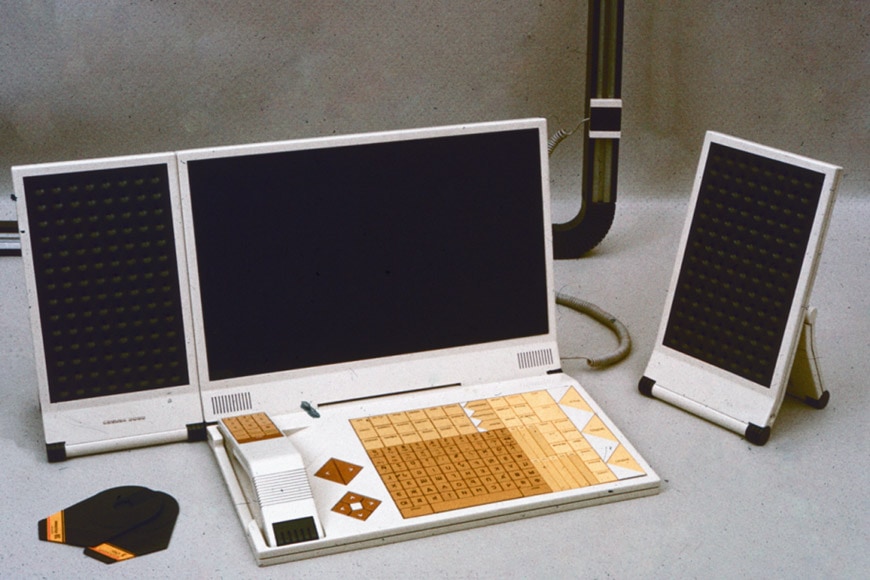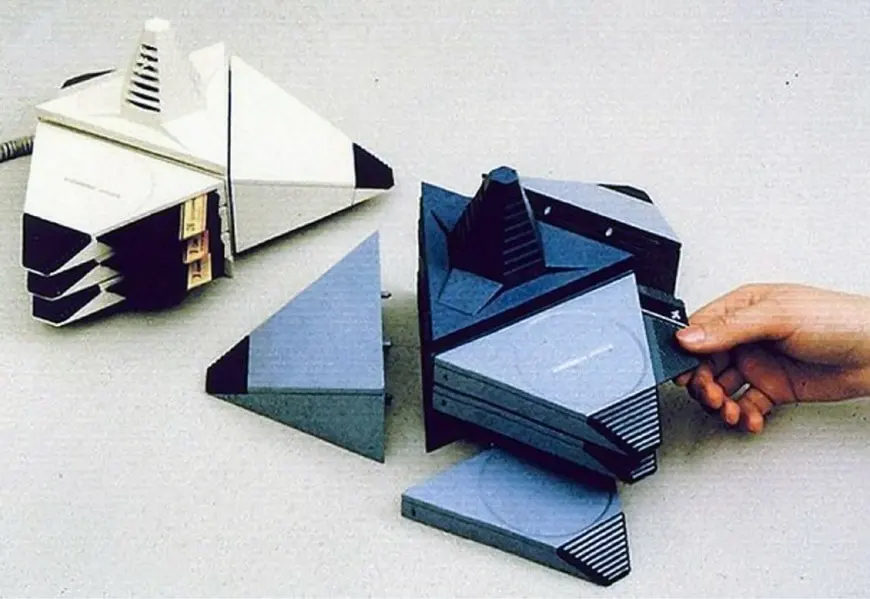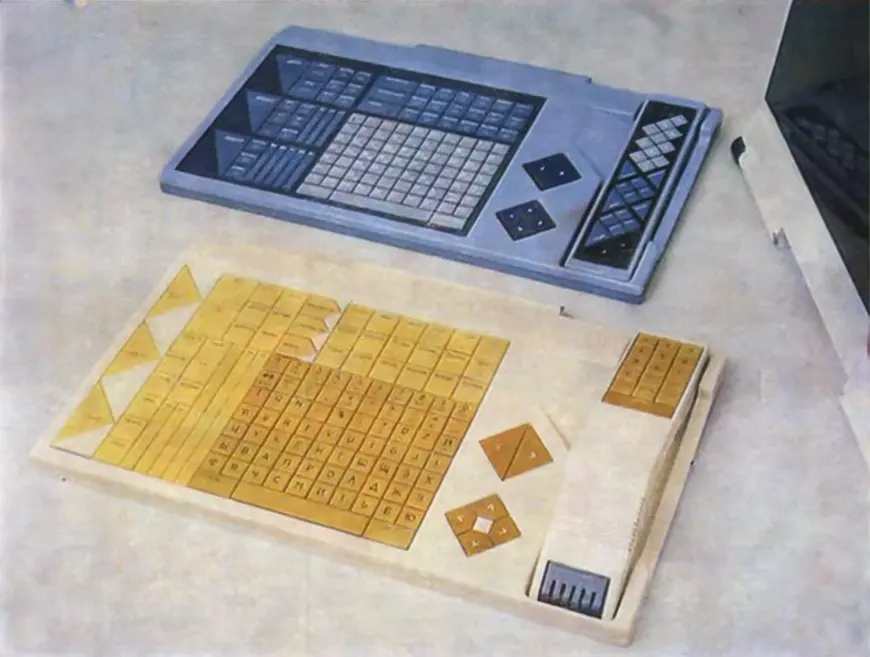|
Computer viking posted:It was an absolute masterstroke in cleaning out nearly every non-intel architecture. The only reason I don't see the entire arc of itanium as a 3D chess powerplay is that they were so dedicated to it that it allowed AMD to establish amd64/x86-64. In the early to mid '90s they were a player in high-end visualization, high-end parallel computing, and they owned MIPS. They doubled down on viz right when cheap desktop 3D was taking off. They doubled down on high-end server hardware right when beige box clusters were taking off. And they spun off MIPS right as embedded/mobile/low power computing was about to take off. In retrospect it's difficult to come up with any way you could improve on the mathematical perfection of their ability to make precisely the wrong decision at every point. And I mean that just scratches the surface. There's the way they hosed up enforcing their patents early on with e.g. nVidia. They hosed by up investing in mass storage just in time to get beaten by companies like NetApp at the low end and EMC2 at the high end. The hosed up essentially ceding Oracle/database in general to Sun (while still trying to own the enterprise server space). They hosed paying millions to trade the bug for a hosed up "g". It's easier to list the ways SGI didn't gently caress up than to list the ways they did. By the time they hosed themselves by going with Itanium they ware already basically a barely-animated corpse. The only thing keeping them above ground was the constant infusion of cash via their long-standing defence/TLA contracts. And those were only still around because it's easier to move the earth out of its orbit than it is to get a government agency to change their procurement processes.
|
|
|
|

|
| # ? May 26, 2024 17:14 |
|
Oh yeah, as I said the writing was on the wall for sgi long before the first itanium machines came out. High end MIPS was probably doomed by intels ability to convert massive sales into RnD. I'm not equally sure about Alpha, but I get the impression HP/Compaq wanted to get out of CPU design and worked closely with Intel from the start; it's hard to keep an architecture going when the new owners actively want to retire it. Same story for PA-RISC, I guess - I know less about it, but I have a maybe unfounded feeling that there were more Alpha than PA-RISC machines around? Was the threat of itanium one of the reasons sun/Oracle kind of gave up on sparc as a competitor, or was that just market forces or a desire to be more of a services company? What about desktop PowerPC?
|
|
|
|
Computer viking posted:Oh yeah, as I said the writing was on the wall for sgi long before the first itanium machines came out. High end MIPS was probably doomed by intels ability to convert massive sales into RnD. Itanium was originally HP's attempt at getting VLIW architecture into the mainstream. Some kind of x86 compatibility was added only when they decided to cooperate with Intel (IIRC).
|
|
|
|
Zopotantor posted:Itanium was originally HP's attempt at getting VLIW architecture into the mainstream. Some kind of x86 compatibility was added only when they decided to cooperate with Intel (IIRC). Right - and I guess there was some sort of corporate politics involved in unifying on a new architecture, too? Also, I seem to remember the itanium x86 support being dog slow, but I'm not sure what to make of it. Did intel just want the bare minimum to run some utilities that didn't need any horsepower? Was it an "if you insist" project by someone who found it pointless? In related but separate news, reading about itanium again reminded me that the OpenVMS on amd64 port is still going on, and apparently is making progress. I have no need for it, and I've just barely poked around in VMS, but I kind of hope they succeed enough to keep it alive.
|
|
|
|
I had an Itanium box once, and for some reason I uploaded a video of it booting: https://www.youtube.com/watch?v=yu60hca8wH0 A Fujitsu-Siemens rebranded HP i2000, this tweet describes it perfectly: https://twitter.com/WillDeacon/status/979738912062148608 I only got it to boot when I used an IDE drive for booting a nightly Debian build. Worked better as a space heater!
|
|
|
|
Oh hey, another product from shortly after HP's mechanical engineers got a CAD tool that could handle freeform surfaces and decided that from then on everything had to look half melted. I may have worked on that tool, but please donít blame me.
|
|
|
|
I don't think I have ever seen let alone used a computer with an Itanium CPU in it. I remember in the late 90s talking in hushed tones about how this CPU would eventually replace the x86 CPUs with friends. I still lust for a Pentium Pro system though
|
|
|
|
afen posted:I had an Itanium box once, and for some reason I uploaded a video of it booting: The gravest sin there is the non-centered audio jacks.
|
|
|
|
But it's to add some pizzazz and emphasize the purpose of each jack! How else will you be able to tell what each jack does from afar??? (I have never known, and absolutely will never know the colour-coding system of audio jacks)
|
|
|
|
Trabant posted:(I have never known, and absolutely will never know the colour-coding system of audio jacks) No-one does, but we all know that the green plug goes into the green socket. I'm really glad they colour-code them, as there's often no way to read the tiny raised pictures around the socket.
|
|
|
|
Audio out is green, green means go, aka go out to the speakers and play Nickelback. Line in is blue, blue for "blew out my line in port because I plugged my guitar amp into it trying to play along with Nickelback" Microphone is pink for all the pink noises your mouth makes into the microphone.
|
|
|
|
A most unsettling mnemonic.
|
|
|
|
Cojawfee posted:Audio out is green, green means go, aka go out to the speakers and play Nickelback.
|
|
|
|
Trabant posted:A most unsettling mnemonic. The reminds me, is the resistor color code obsolete?
|
|
|
|
Sony ViEW VIW-5000A 80286 based PC with Sony LDP-1450W player built in.  https://vintagecomputer.ca/sony-view-system-pc-with-a-laser-disc-player-built-in
|
|
|
|
Now that is a big cup holder.
|
|
|
|
Erulisse posted:Now that is a big cup holder. I could put my salad bowl in that thing!
|
|
|
|
afen posted:I had an Itanium box once, and for some reason I uploaded a video of it booting: Ha, very neat. I have vaguely wanted a late-generation itanium to play around with, but watching someone else do it is probably a cheaper, better, approach.
|
|
|
|
The Imp of Nipples posted:The reminds me, is the resistor color code obsolete? It's obsolete as long as you don't care about your circuits working properly.
|
|
|
|
Some of the mnemonics to remember it may be a bit ... out of touch with the times, though.
|
|
|
|
Humphreys posted:Sony ViEW VIW-5000A 80286 based PC with Sony LDP-1450W player built in. We used those at the Defense Language Institute in the early 90s.
|
|
|
|
The Imp of Nipples posted:The reminds me, is the resistor color code obsolete? in that cheap resistors have the color codes printed so poorly it's harder to tell what they should be by eye than it is to just measure them with a multimeter, yes
|
|
|
|
Tunicate posted:in that cheap resistors have the color codes printed so poorly it's harder to tell what they should be by eye than it is to just measure them with a multimeter, yes If that isn't the truth. It's not worth straining your eyes to discriminate between brown and red on these things.
|
|
|
|
Pham Nuwen posted:It's obsolete as long as you don't care about your circuits working properly. Phew, then I'm safe then. But yeah I suppose I was thinking about SMDs as opposed to the older versions which I'm sure is, and will be very much still in use. I haven't messed with the internals of anything electronic in a while.
|
|
|
|
Back when I was a student, I found an Itanium-based HP rack server in an abandoned server room at my department. It could boot, but I think it was set up as some kind of passive compute node for a larger network, because it refused to send any signal to the VGA port. I knew it was alive because it would request an IP address from the network, but I had no way to get in contact with it. It had a serial port, but I was unable to figure out the settings to do anything with it (maybe this port was disabled as well). I eventually got it working by figuring out that before booting whatever compute node Linux was installed, it must be going through the EFI bootloader. I looked up HP's documentation, which was/is incredibly comprehensive. In fact, so comprehensive that based on its description, I could (blindly) navigate the menu-based EFI bootloader, get into an EFI command prompt, and type in the commands to boot from the CD drive, where I had placed a CD containing an IA64 Debian install disc. The Debian installer was all to happy to show itself over the VGA port, so I managed to set up a proper functioning Itanium system. This was around 2012, so it was hopelessly obsolete even then, but it was fun. In retrospect, I had a lot of free time in those days.
|
|
|
|
Athas posted:Back when I was a student, I found an Itanium-based HP rack server in an abandoned server room at my department. It could boot, but I think it was set up as some kind of passive compute node for a larger network, because it refused to send any signal to the VGA port. I knew it was alive because it would request an IP address from the network, but I had no way to get in contact with it. It had a serial port, but I was unable to figure out the settings to do anything with it (maybe this port was disabled as well). Awesome
|
|
|
|
Upgrading and Repairing PCs, 15th Ed. was my computer repair bible when I was younger, but man did the author have a hardon for Itanium processors as The Future Of PCsTM. I wonder what he has to say in the latest edition...
|
|
|
|
(strong possibility I got this link from these very forums, but I can't be sure) This is obsolete and failed in the sense that it never made it past the concept stage but hot dang I wish it had. USSR-designed computers from 1986:      More info here: https://www.inexhibit.com/case-studies/project-sphinx-when-the-ussr-tried-to-change-the-computer/ edit: bonus East German computer parade shot: 
|
|
|
|
Trabant posted:(strong possibility I got this link from these very forums, but I can't be sure) omg I love this, I want to touch all of this.
|
|
|
|
Trabant posted:(strong possibility I got this link from these very forums, but I can't be sure) just gorgeous
|
|
|
|
Trabant posted:edit: bonus East German computer parade shot: "The PC 1715 was an office computer produced by VEB Robotron in East Germany starting in 1985. The system featured an 8-bit microprocessor, the U880, a clone of the Zilog Z80. It was built for office work and education, but also had an interface for a pacemaker." WTF East Germany.
|
|
|
|
Phanatic posted:"The PC 1715 was an office computer produced by VEB Robotron in East Germany starting in 1985. The system featured an 8-bit microprocessor, the U880, a clone of the Zilog Z80. It was built for office work and education, but also had an interface for a pacemaker." The Stasi lie detector technology didn't gently caress around.
|
|
|
|
Phanatic posted:"The PC 1715 was an office computer produced by VEB Robotron in East Germany starting in 1985. The system featured an 8-bit microprocessor, the U880, a clone of the Zilog Z80. It was built for office work and education, but also had an interface for a pacemaker." According to the reference in the wiki article the pacemaker thing was a special version, not a standard feature.
|
|
|
|
Yes, the pacemaker seems to have been a special dongle at it isn't even mentioned on the German language sites. But while looking I found an east-german cnc kit:  That seems to have used an infinite punch strip rolled on a tape roll, instead of punch cards or tape. This looks like a tape drive, but the rolls are made of paper with holes: 
|
|
|
|
soundtrack for this page https://www.youtube.com/watch?v=Crz1PpKk3dU
|
|
|
|
^ I don't know if there's "1970s UKwave" out there, but since I'm switching tracks a bit I hope it exists: One link led to another so I fell down the rabbit hole of vintage calculators and learned about this amazing thing:  (I actually think I may have seen before and, as in my post about  computers, there's a strong chance this was posted on these here forums already...) computers, there's a strong chance this was posted on these here forums already...)Some details from here: quote:Surely one of Sinclair's most unusual products, the strange-looking Wrist Calculator (right, being worn) was launched in February 1977. It was the first product of Science of Cambridge, the company which came between Sinclair Radionics and Sinclair Research. In some ways it was ahead of its time, anticipating the LCD calculator watches of the 1980s. Ah, British electronics If that doesn't deter you, the good news is that you can buy some NOS kits, completely unassembled. The bad news is that the cheapest one I saw out there is $652.48 (and most expensive $1,300). But just look at it: 
|
|
|
|
holy poo poo that's amazing
|
|
|
|
Thereís nothing in this picture for scale, so in my head those reels are 4feet in diameter and the cabinet in the center is the same size as those old IBM punch card readers for the 1401
|
|
|
|
namlosh posted:Thereís nothing in this picture for scale, so in my head those reels are 4feet in diameter and the cabinet in the center is the same size as those old IBM punch card readers for the 1401 I also found an integrated conversion office space:  Bottom left shelf has the hole tape unit. Bottom right has 8 inch floppy, and cassette. Top right is a magnetic tape drive. Stats of the hole tape unit: 47kg weight, 482x266x720 mm The whole robotron fansite is full of great old tech: https://www.robotrontechnik.de/html/komponenten/datentraeger.htm#lochband
|
|
|
|

|
| # ? May 26, 2024 17:14 |
|
Code Jockey posted:soundtrack for this page https://i.imgur.com/c7gcgqA.gifv
|
|
|
































